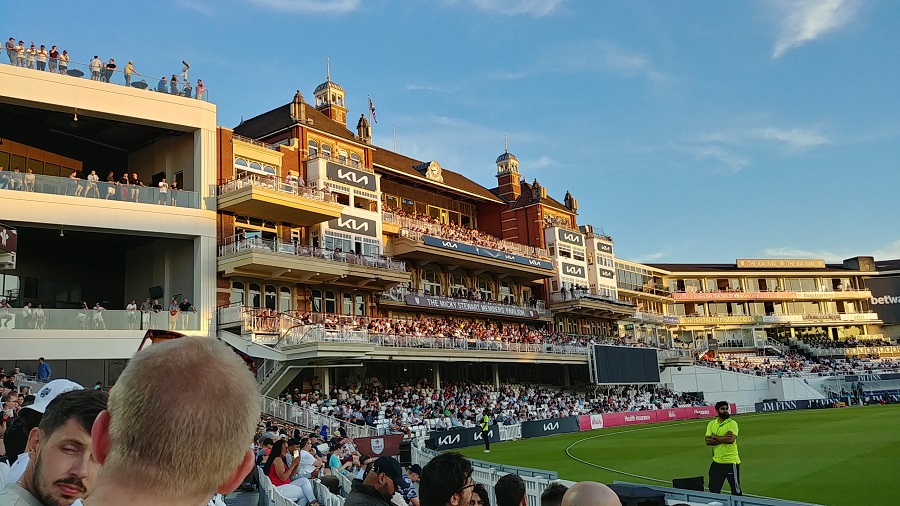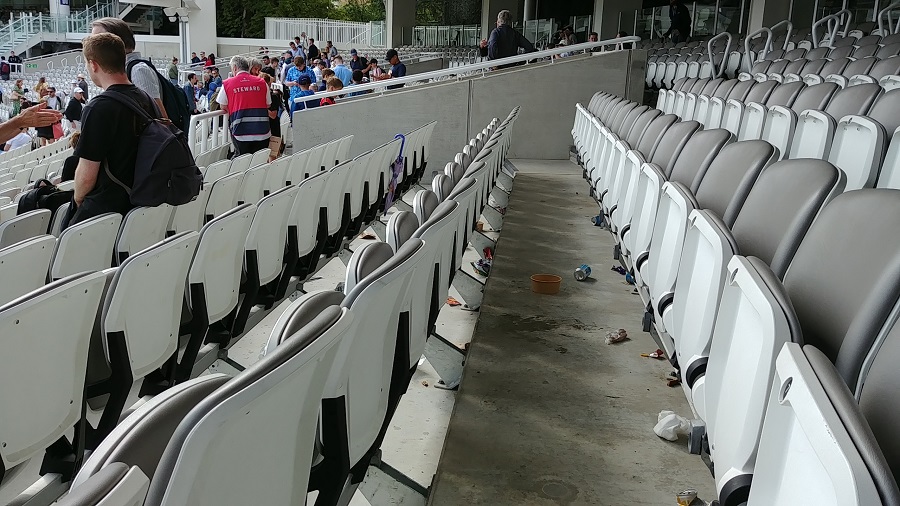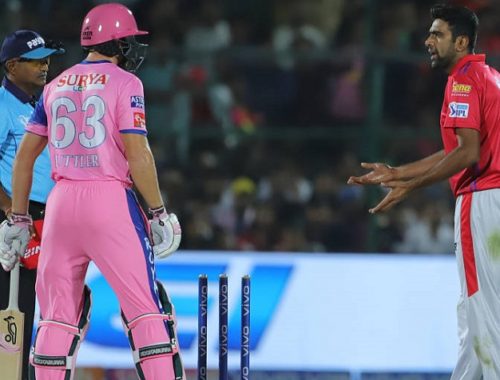
Foreign Correspondent
As an American who's gone to tons of professional and college sporting events over the past thousand or so years, it was cool to be able to check out a few Vitality Blast T20 matches on a recent trip to London. I was amazed at some of the differences between going to a game in London versus going to a game in, say, Boston or New York. And while it was fun as heck to see cricket in a big stadium setting, it wasn't the action on the field that I found the most noteworthy.
First off, ticket prices were a lot easier to swallow. Granted, I live in Boston and Red Sox tickets are annually among the highest -- if not the highest -- in Major League Baseball, but really good seats at both Lord's and The Kia Oval were far less than I would have paid for even the lowest priced seats at Fenway. Tickets at both venues were £35 or about $44. (The exchange rate is better than it's been in years. Ten years ago, the dollar was equal to about £1.6. Currently, it's closer to £1.25.)

Concession prices were also a lot more reasonable than in the States and there are some cool philosophies around food and drink that kind of messed with my head. First off, you can bring your own food. (And in some cases, you can bring your own beer and wine!) In the US, once you step inside a stadium or arena, you're a prisoner of the folks that are running the place. If you want to eat or drink anything, you're at their mercy and if they decide to charge $12 for nachos, they're going to charge $12 for nachos. Prices are generally jacked-up, but you sort of know that going in.
At both Lord's and The Oval, I was amazed at how reasonable prices were. Beer was about the same price inside the venue as it was at pubs around town. Maybe even more impressive was the focus on sustainability and the environment. To buy a pint of beer, you pay for the beer (£6 or about $7.50) and then you pay a £1 deposit on the reusable plastic cup. If you want another, you bring back your cup and they give you your drink in a new cup. If you don't have a cup, they hit you with the deposit fee again. What's cool about this is that if you're too lazy to collect your £1 deposit at the end of the match, there's no shortage of kids going around collecting abandoned cups and turning them in at a pound a pop. That can add up really quickly at a crowded event. I definitely saw some enterprising kids grabbing £20-30 worth of cups after the last ball had been delivered.

Maybe an even cooler concept centered around water. At Lord's, you were advised to bring a reusable water bottle and refill it with filtered water that they provide for free. I honestly can't imagine this ever becoming an option at a major sports venue in the US. Here's some math. I can buy a case of water (24 bottles) for about six bucks. That breaks down to 25 cents a bottle. And that's retail. A stadium that's buying bottles by the tens of thousands gets them for far less. If Fenway Park charges $6 for a bottle, they're coming pretty close to making $6 per bottle. If they sell 20,000 bottles per game -- which may even be low-balling it when they sell out a 37,000-seat stadium every game -- that's $120,000. Multiply that by 81 home games (and I'm not counting playoff games) and you're looking at almost ten million dollars per year in water sales. NO ONE is going to give that up.
While there's no way to project the ultimate ramifications of these two environmentally motivated moves, the difference at the venue is noticeable. Here's a picture of the row I was sitting in at Lord's after the match. It's virtually clean before the cleaning crew has even started its work.

The other thing that was strikingly different was security. You're allowed to bring bags, backpacks, whatever into the stadium. At Fenway, you're not allowed to bring in anything larger than a small purse. (At New England Patriots football games at Gillette Stadium, you're only allowed to bring in transparent plastic bags.) At both Lord's and The Oval, someone took a cursory peek into your bag and that was about it. At most sporting events in the US, not only are you not allowed to bring bags, but you also have to go through a metal detector and then still get patted down relatively aggressively by security. It was truly embarrassing to have to explain this to my British friend at the Kia Oval.
And not to get overly political, but just to point out the blatantly obvious: There's the same amount of mental illness in England as there is in the US and the folks there use and misuse drugs just as much as we do in the States. We watch the same violent TV shows and movies, listen to the same music, read the same books, and play the same video games. But since guns are far, far less accessible in England, they don't have mass shootings on a regular basis and they can go to a sporting event without being treated like they're going to visit a maximum-security inmate.
Being able to take in matches at two of the more historic and venerable cricket grounds on Earth was an incredible experience. The sense of historical importance was palpable. But while it was daunting to think about all of the history that had occurred at each of these venues, it was the forward-thinking, eye-on-the-future policies at each that impressed me the most.
© CricAmerica.com/Steve Steinberg 2022




